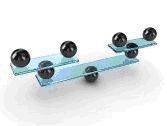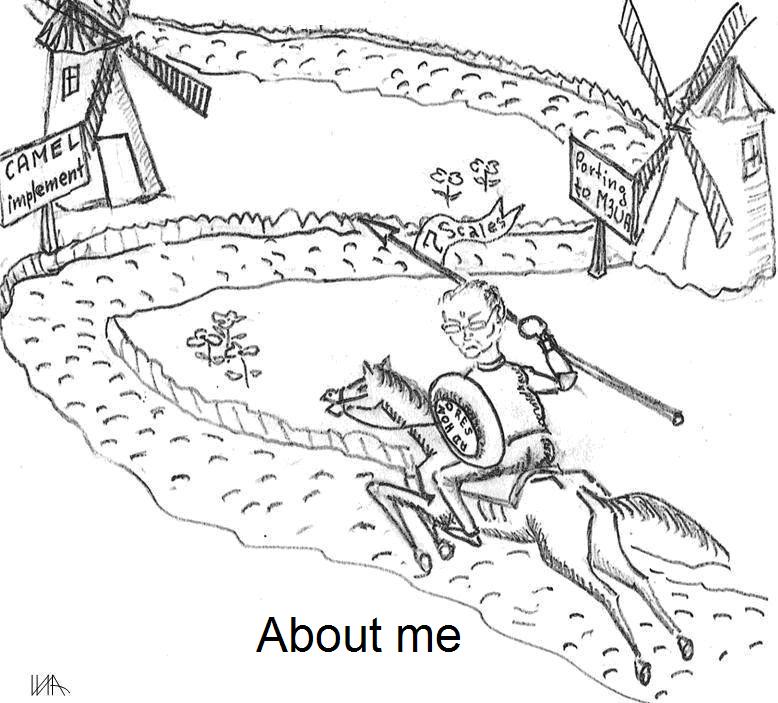Project overview
Software architecture
Developer´s notes
Base roadmap
Roadmap beyond v0-3-1
About the author

|
About structure and terminology of this project Project overview Software architecture Developer´s notes Base roadmap Roadmap beyond v0-3-1 About the author |
 |
The 7-Scales project aims to establish a simple to use and easy to extend base for development, testing and executing of SS7 scenarios. This Project supports two modes of operation - simulation mode to develop and tests scenarios, and network mode to execute scenarios against the network. Communication with the network use a light version of SCTP and M2PA. The project is completed to the stage of recognising Application Contexts and Operations for MAPv1/2/3, CAP1/2/3/4 and Ericsson CS1+. Therefore, any scenario can be developed. The 7-Scales is written in C under Linux. It requires some C-development skills and considerable knowledge in the area of SS7 Application Parts, namelly MAP, INAP and CAP.
This is a stable and ready to use Release v0.3.1 of the 7-Scales project that have been used in the fields. It is supplied with sufficient information that explains the concept and the architecture of this work, and will guide you how to write scenarios. Yet, this is just the top of the iceberg; a complete explanation would take too much time and is not needed now. It is worth saying here that the concept is designed in a way that enables this software to automatically process any message that steps on TCAP, to check its ASN.1 syntax, to check its semantics at Application Part level (e.g. MAP, CAP, etc), and to deliver it to the process that deals with its semantics at the AP- user level.
The SS7 is a complex subject to tackle with and although the 7-Scales code is designed to be as simple as possible, it isn´t easy to use. On top of that you are supposed to add some code that implements a scenario as a header file and compile. You might not be content with my manner of coding; I am not a professional developer although I´ve been in the programming for 30 years. This might be an ugly code for someone but is free and it works. It is not finished; you can join the development team that, for the time being, consists of only me. I don´t dream that this ugly-duckling-like work will grow to be a "White Swan" or something; I´d be happy to see it as a preferred "dish" at the feast of Knowledge and Professionalism.
If this line of thoughts doesn´t convince you that the 7-Scales is worth being explored, it is the right moment for you to stop. If not, I wish you pleasant and beneficial time as a user or a contributor of the 7-Scales project.
It is also the right time to present my acknowledgement to the people who supported me in this long journey. These are Oggy and Ilko, who compensated my lack of Linux knowledge and experience; Anny, Monni, Vasko and Jordan who supported me at the network side, and Angel whose sharp eyes and experience with CS1+ helped me a lot.
I would like to present my thanks to all IT people who have shared their knowledge and experience on the Internet. Without this invaluable source of information I wouldn´t do anything.
Once, some three years ago, I decided to look for some free SS7 software to facilitate us in troubleshooting cases that were very difficult to reproduce in the network. I got to the OpenSS7 project and found there a demonstration program named "test-m2pa". I studied this code carefully; it was my first and, I hope to be the last touch with the C-language. This program became my practical guide in the C-programming. So I think I owe special acknowledgements to the author of this program, Mr. Brian Bidulock, too.
I am not sure what the fate of the 7-Scales project will be. But I am sure that either it will succeed or it will push the base SS7 SW vendors to publish some free software with similar capabilities. Therefore, in all cases the 7-Scales project will change the Telecom world for better.
Visit the 7-Scales on Sourceforge
